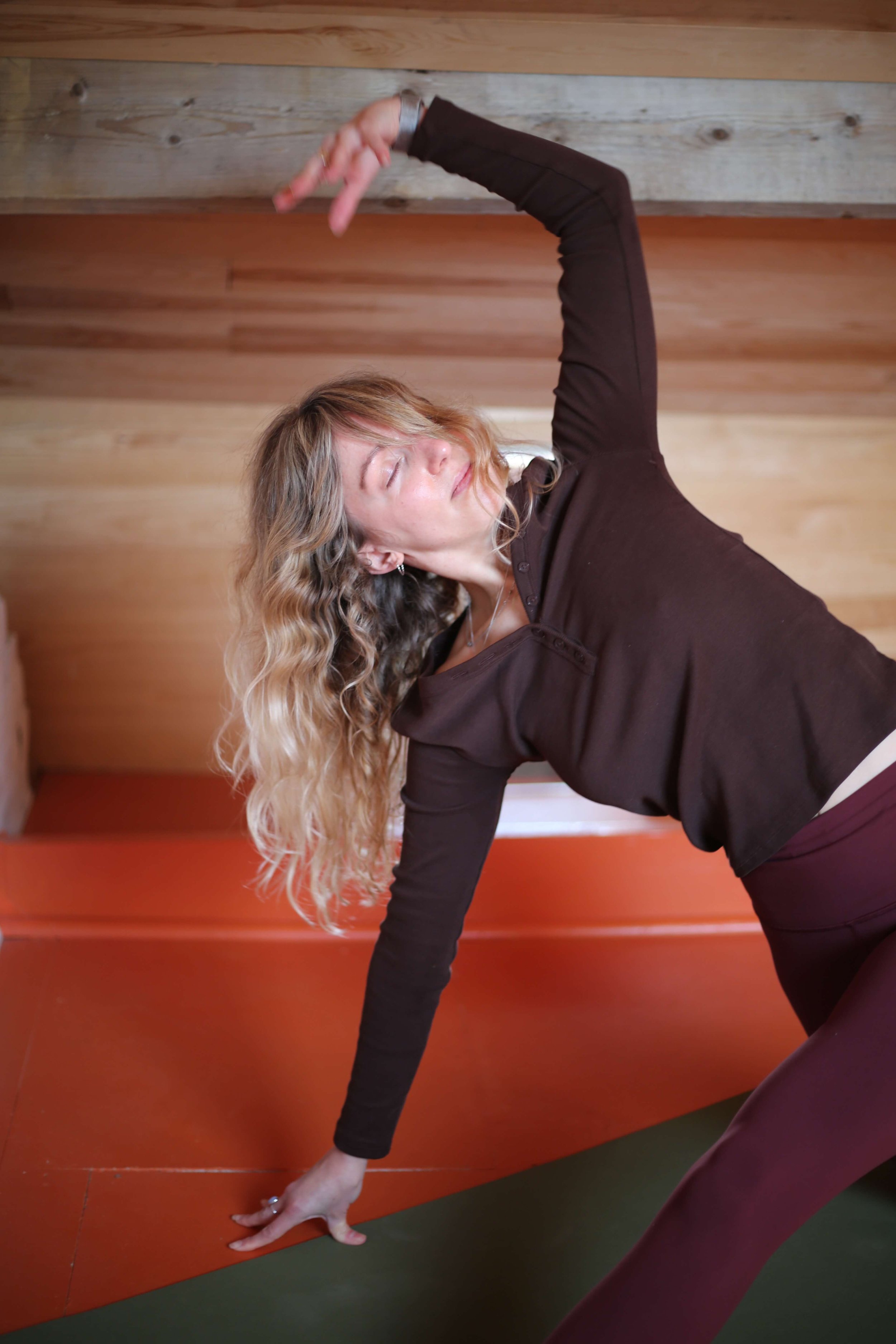Somatic Principles for Yoga Teachers
This 20-hour CPD module is designed for yoga teachers who are interested in sharing a more somatic style of class and are looking to enhance their understanding of embodied anatomy, with a focus on language and cues that support the student's embodiment process.

Why a somatic approach?
Somatic language prioritises sensing and being aware of the body from the inside out, stepping away from more traditional and rigid asana alignment cues that focus on what it looks like and leaving students worrying if they're doing it 'wrong' or 'right'. Instead, empower your students to feel their own way through movement and into asana in a way that feels right and is guided by the wisdom and language of their own body.
This approach supports the student's proprioceptive awareness and through enhanced body awareness and deeper mind-body connection, we support the body in 'natural alignment', with a shift toward more effortless and fluid organic movement, putting students at much less risk of injury and supporting autonomy, agency and choice.
When students can better sense what is happening within their own body, they can release a huge amount of tension and feel more safe, supporting their nervous system and capacity to respond and receive the practices, to open, soften and expand. Students become better equipped to make decisions about their practice based on what is most supportive for them in the moment, and develop a greater capacity to respect their body and boundaries.
When students are guided in this way, their practice becomes more intuitive and authentic, they feel empowered to explore movement with curiosity and confidence, knowing that their experience is valid and valuable. This creates a sense of freedom to explore their inner terrain within the practice, extending beyond the physical to sensing into emotional and energetic states as well. Students may find that by tapping into their body’s sensations and being fully present in the moment, they can release tension, including stuck emotions as a result of stress and trauma, and they can safely experience a more profound sense of connection.
What will you learn?
In this course, you will learn how to guide your students through an embodied process of movement and asana by using somatic language that encourages sensing, feeling, listening, exploring, and tuning in to the body’s subtle cues and internal wisdom.
We will explore practical techniques for curating classes and sequences that support this process and students' understanding, making this an accessible practice to ALL students, with a focus on somatic language, embodied anatomy, organic movement, and applying somatic principles in asana and alignment. Teachers will leave with practical skills and techniques that can be seamlessly integrated into their existing classes, creating more intuitive, body-aware, and engaging experiences for their students that deeply enhances their connection to self.
By the end of the course, you will understand how to cultivate a somatic approach to teaching that fosters body awareness, promotes mindful movement, and deepens the connection between body, mind, and heart. Teachers will leave feeling ready to explore somatic-based cues, language, sequences, themes and practices that encourage self-awareness and foster presence within their classes, providing a more holistic and empowering experience for their students.
Two in-person days at Yantra Studio exploring:
-
What is somatics and how this approach supports and fits into our teaching, classes, and benefits our students’ practice?
-
What is embodiment and how do we facilitate this?
-
How to create a class pathway that supports the embodiment process and the nervous system, incorporating breath, movement, and stillness into sequencing?
Sessions can be held weekly or bi-weekly.
-
How to integrate this awareness into movement and apply somatic principles to asana, encouraging free movement exploration, release of tension, and natural alignment?
-
How to create a class theme or focus that supports embodiment and guides the class pathway.
-
how to guide these practices using language that speaks to and guides the body into movement, and supports natural alignment, inviting students into a somatic experience of yoga asana.
-
Pre-recorded Classes with Marie: written reflections and class analysis using Marie’s supportive reflection method
Class Planning: creating a class pathway for a themed class, incorporating embodied anatomy and somatic cueing that will support this, using Marie’s class planning method
Informal Assessment: teaching and recording your class to a live group of students in-person or online and following up with a written reflection. Classes will be reviewed by Marie and feedback will be givenPre-recorded Classes with Marie: written reflections and class analysis using Marie’s supportive reflection method
Class Planning: creating a class pathway for a themed class, incorporating embodied anatomy and somatic cueing that will support this, using Marie’s class planning method
Informal Assessment: teaching and recording your class to a live group of students in-person or online and following up with a written reflection. Classes will be reviewed by Marie and feedback will be given.
